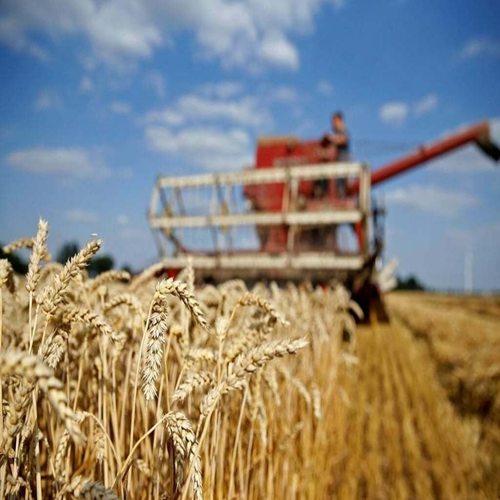Wheat drops nearly 2% on harvest pressure; corn, soybeans fall

SINGAPORE, June 17 (Reuters) – Chicago wheat fell nearly 2%, reaching a six-week low at $6.01-3/4 per bushel due to the advancing U.S. winter crop harvest. Corn dropped 0.6% to $4.47-1/4, and soybeans declined 0.7% to $11.71-1/4. Improving weather in North America and Australia and new supplies from the Northern Hemisphere are suppressing prices. Traders monitor U.S. weather and USDA’s upcoming crop-progress and planting reports.
SINGAPORE, June 17 (Reuters) -Chicago wheat slid almost 2% to hit a more than six-week low on Monday, as pressure from rapidly advancing winter crop harvest in the United States and other exporters in the northern hemisphere dented prices.
Corn and soybeans also fell, with focus on the weather in the U.S. Midwest.
“Seasonal conditions continue to improve in North America and Australia,” said Commonwealth Bank analyst Dennis Voznesenski.
“Northern Hemisphere harvest has started, and when there’s new supplies coming online, it typically suppresses prices.”
The most-active wheat contract on the Chicago Board of Trade (CBOT) Wv1 slid 1.8% to $6.01-3/4 a bushel, as of 0307 GMT, the lowest since May 2.
Corn Cv1 lost 0.6% to $4.47-1/4 a bushel and soybeans Sv1 gave up 0.7% to $11.71-1/4 a bushel.
Traders are monitoring U.S. weather as corn crops approach a key development period in July, while winter wheat harvesting is gathering pace.
In the Black Sea region, rain in dry parts of Russia and Ukraine provided some relief for corn, though benefits may be limited for wheat with harvesting looming, analysts said.
The U.S. Department of Agriculture (USDA) cut its wheat production estimates for top-exporter Russia and Ukraine this week following drought and frosts.
Crop conditions for soft wheat in France were steady last week, data from farm office FranceAgriMer showed on Friday, but harvest prospects in the European Union’s biggest producer remained poor after a damp growing season.
Conditions in the U.S. Crop Watch corn fields have been below average so far this season, and while last week’s warmth perked up some fields in the western Corn Belt, the eastern fields will face scorching temperatures this week, Karen Braun, an analyst for Reuters, wrote in a column.
“Crop health remains perfect in Indiana and Ohio, but plunged this week in southeastern Illinois after a second week with no rain. Conditions in all three locations could decline next week as the heat will be accompanied by little or no rain.”
The USDA is slated to release weekly crop-progress data for U.S. corn and soybeans later on Monday, and some analysts said they expect slight declines in good-excellent condition ratings.
Traders are also waiting for the USDA to issue U.S. plantings and quarterly stocks data on June 28.
Large speculators trimmed their net short position in Chicago Board of Trade corn futures in the week ended June 11, regulatory data released on Friday showed.
The Commodity Futures Trading Commission’s weekly commitments of traders report also showed that non-commercial traders, a category that includes hedge funds, increased their net short position in CBOT wheat and increased their net short position in soybeans.
















